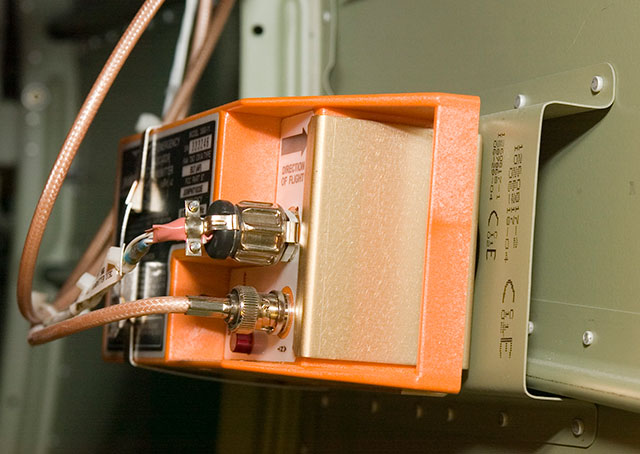
The FAA on March 10 encouraged aircraft owners and operators with emergency locator transmitters secured by hook-and-loop fasteners (the type sold under the brand name Velcro) to switch voluntarily to a metal strap-type restraint.
Investigations into some recent aircraft accidents found that ELTs mounted with hook-and-loop fasteners did not transmit an emergency signal because they were dislodged from their mounting trays on impact, severing the antenna connection. The FAA evaluated five courses of action to mitigate safety concerns, but decided against mandates that it deemed would place an undue burden on aircraft owners.
After evaluating the use of hook-and-loop fasteners, the FAA identified potential problems with mounting in a notice in the Federal Register: These fasteners may not retain the ELT if insufficient tension is applied to close them, if they stretch or loosen over time, if debris contaminates the hooks and loops, or if the fasteners degrade because of environmental factors.
The agency released recommendations to help manufacturers improve their installation and maintenance guidelines in 2012, and revised the technical standard order for ELTs to eliminate hook and loop fasteners from future TSO designs.
It is not issuing an airworthiness directive or policy prohibiting installation approval of units that use hook and loop fasteners, however. It also decided against withdrawing the TSO authorizations of ELTs utilizing hook and loop fasteners for mounting. Neither a revised policy nor withdrawal of TSO authorizations is needed, the FAA said, because manufacturers with ELT designs incorporating fasteners “which failed to perform their intended function in accidents either have revised or are in the process of revising their designs, minimizing the need for policy in this area.” The agency's choice to instead encourage voluntary action, the FAA noted, “avoids placing an undue burden on aircraft owners while acknowledging the voluntary efforts of ELT manufacturers to improve designs.”



